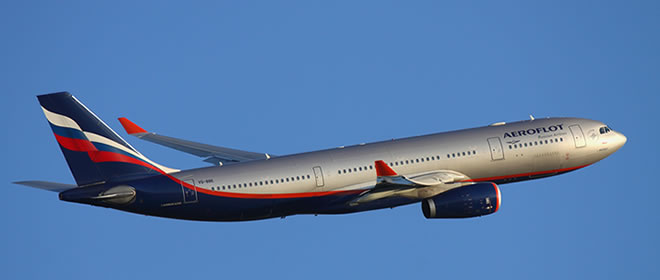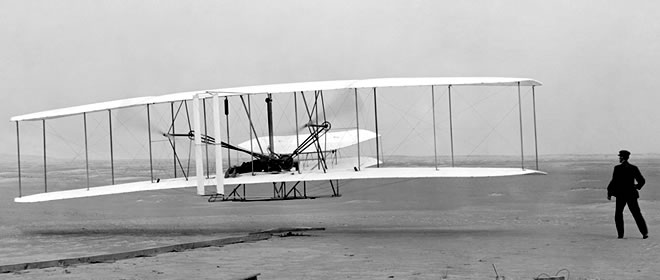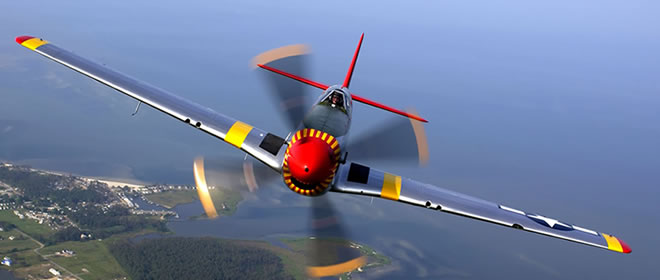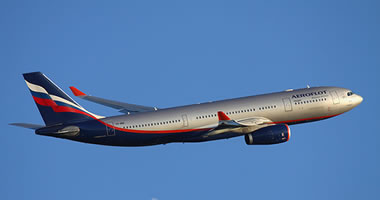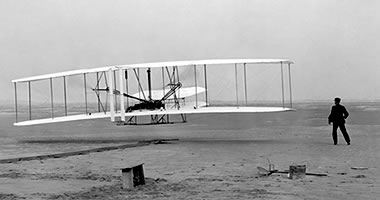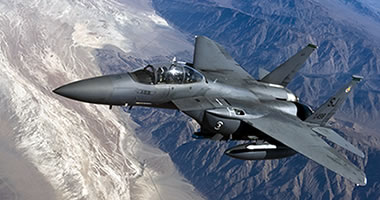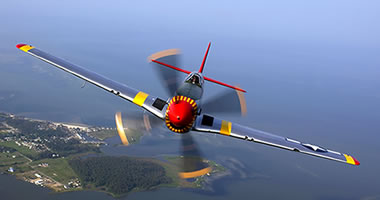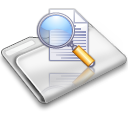Hawkinge
*HAWKINGE: Military later civil and in WW2 again a military aerodrome
Note: This picture (2017) was obtained from Google Earth ©
The housing estate west of the A260 now occupies most of the WW2 airfield but the outline of the northern extension, for the NW/SE runway can still be clearly seen.
Military users: WW1: RFC Examination Ground and Aircraft Despatch Section 1915 to 1917
RFC/RAF Aircraft Acceptance Park 1918 to 1919
This astonishing aerial picture was kindly sent by Neill Bruce, (see: The Vivian Wigg Collection / neillb@brucephoto.co.uk)
It appears that Flt. Lt. Federick William Hartridge, A.F.C. Special Reserve completely screwed up a 'go-around' in the Hawker Horsely J8025 on the 7th August 1933 and crashed into this hangar, taking with him the 'gunner' Norman Owen Connett, a carpenter-rigger.
Between wars:
17 Sqdn (Sopwith Snipes, Hawker Woodcocks, Armstrong Whitworth Siskins, Bristol Bulldogs, Gloster Gauntlets & Hawker Harts)
25 Sqdn (Sopwith Snipes, Gloster Grebes, Armstrong Whitworth Siskins, Hawker Furys and Demons and lastly Gloster Gladiators)
56 Sqdn (Sopwith Snipes, Gloster Grebes and Armstrong Whitworth Siskins)
WW2: RAF Fighter Command 11 Group Forward Airfield
*Battle of Britain RAF Station
Note: This fabulous picture was scanned from the excellent book 'Biggin on the Bump' by Bob Ogley. See BIGGIN HILL if you would like a copy of this book.
17, 56, 79 & 605 Sqdns (Hawker Hurricanes)
141 Sqdn (Boulton Paul Defiants)
610 Sqdn (Vickers-Supermarine Spitfires)
2 Army Co-operation Sqdn (Westland Lysanders)
LATER IN WW2
41 Sqdn (Vickers-Supermarine Spitfires)
611 (West Lancashire) Sqdn (North American P-51 Mustangs)
POST WW2
It appears that when this Mk.LF IXe Spitfire MK358 was 'posted' here until 1958, it was painted silver and wore its 'Maintenace' serial of M5690. Clearly, those in charge in the RAF had no interest whatsover in celebrating the operational history of this aircraft. And indeed, I suspect they would rather have had it scrapped.
These two pictures were kindly provided by Mike Charlton who has an amazing collection of British Aviation postcards - see www.aviationpostcard.co.uk
NOTES: In 1969 the Battle of Britain film production company are reported to have re-opened HAWKINGE for several location sequences. I now very much doubt this, but, it would be of great interest to discover the site they actually used. Does anybody now know where this was? Clearly it was on the coast somewhere, presumably in Kent (?), whereas HAWKINGE is set back a couple miles further back from the coast.
The other UK airfields used were BOVINGDON (HERTFORDSHIRE), DUXFORD (CAMBRIDGESHIRE), and NORTH WEALD (ESSEX). This said, surely that abysmally inaccurate film has arguably done more to utterly distort the history of that conflict than any other form of propaganda?
91 & 441 (RCAF) Sqdns (Spitfires)
Also used by 53, 57 & 59 Sqdns of Bomber Command (Blenheims)
Air-Sea Rescue: 277 Sqdn (Supermarine Walrus & Westland Lysanders)*
British airline user: Post 1918: Aircraft Transport & Travel Ltd
Location: Just SW of Hawkinge village and A260, 2 nm north of Folkestone
Period of operation: 1915 to 1962 (Continuous operation?)
Site area: WW1: 166 acres 823 x 731
Runways: WW2: NE/SW 1006 grass N/S 823 grass
E/W 1006 grass
NOTES: In February 1919 AT&T, (Aircraft Transport & Travel), commenced an air parcel service delivering relief food and clothing to Ghent in Belgium using RAF Airco DH.9s flown by RAF pilots. In March AT&T used 18, 110 and 120 Sqdns to commence a British Government air mail service to Cologne in Germany, also using Airco DH.9As . Some reckon this service ran from October 1919 to June 1920. One thing is certain, having ‘private enterprise’ getting involved in British military affairs is nothing new and goes back many, many centuries.
One website states that AT&T was formed on the 15th October 1916 to operate relief flights to Ghent in Belgium. At the height of WW1 into enemy occupied territory? I think not. Oct 1918 seems a much more sensible date? The Armistace was signed at 11am on the 11th Nov 1918 but it would seem quite probable that a forward thinking individual such as George Holt Thomas would have seen the potential? AT&T was incidentally, a subsidary of Airco.
BETWEEN THE WARS
In the late 1920s and early 1930s No.25 squadron operated Armstrong Whitworth Siskin fighters here.
A FEW NOTES ON THE 'BATTLE OF BRITAIN'
Because HAWKINGE is possibly the least remembered of ‘Battle of Britain’ airfields (?), this seems as good a place as any to set at least one record straight. This is that the usual ‘official’ history of the Battle of Britain is still a national disgrace. It was not fought only by British pilots, far from it. Indeed, today it can be very convincly argued that if it wasn’t for the foreign pilots in RAF Fighter Command, the ‘Battle’ would certainly have been lost. The Polish pilots especially having made a contribution of worth well in excess of their numbers, even though they formed the largest ‘foreign’ contingent.
Of the 2917 airmen awarded the Battle of Britain ‘clasp’ having flown at least one authorised sortie with an eligible unit of RAF Fighter Command from the 10th July to the 31st October, 583 airmen were either foreigners or from the Commonwealth. In other words more than a sixth! Here’s the breakdown that is mostly acknowleged as being correct today:
Great Britain: 2334
Australia: 33
Belgium: 29
Canada: 99
Czechoslovakia: 88
France: 13
Ireland: 10
Jamaica: 1
New Zealand: 126
Poland: 145
Rhodesia: 3
South Africa: 25
United States: 11
It appears that they were not all pilots, because the Bolton Paul Defiant and in some cases even Bristol Blenheims were employed in the fighter role. During the Battle of Britain 544 of these 2917 men lost their lives. From a strictly military point of view a rate of attrition that could not be sustained of course. But a tiny number compared to the total number of lives lost during WW2. On the other hand a very sober figure emerges; of those who survived the Battle of Britain, between the Ist November 1940 and the 15th August 1945 a further 795 died in all theatres of the war. In total 1339 lives lost, not far short of half! Plus of course all those injured so severely that the rest of their lives would be severely affected.
When looked at in these terms it really does seem to emphasise that the great truth Churchill first uttered, apparently in private initially whilst the Battle of Britain was still being waged, to the effect: “Never in the history of human conflict has so much been owed by so many to so few.”
It is of course a demand of history to try and appreciate what was going on within the enemy side. To be very simplistic even by this stage they’d ‘lost the plot’, and ‘drunk with power’ possibly describes their condition? ‘Fatso’ Göring in charge of the Luftwaffe and mostly drugged up (?) was making claims to Hitler that astounded his front line commanders as being utterly unrealistic. Plus, very fortunately for us, the Nazi interpreters of their aerial reconnaissance flights really screwed up on identifying all the airfields RAF Fighter command were operating from. Bombing airfields such as EASTCHURCH and WEST MALLING, the latter still under construction. And, by quite possibly also making the crucial mistake, by not always hitting our radar defences, as to why the obliteration of the RAF didn’t happen?
Mostly under the direction of Sir Keith Park I believe, RAF Fighter Command deployed a considerable amount of their fighters to temporary ‘makeshift’ airfields, such as HAWKINGE and WARMWELL (DORSET) known as Forward Airfields. And it seems it was largely by this tactic alone, which deceived the Germans into thinking we had less than half the fighter aircraft available to mount an adequate defence? No wonder they were surprised! This popular picture is only partially correct and there is a tendency to think only 11 Group were involved in the 'Battle of Britain' - something again harking back to the film. In fact the majority of RAF fighters based throughout the UK saw very little action compared to 11 Group and the RAF was actually very strong. This was something the Germans had failed to appreciate.
This said the idea of having Forward Airfields in Kent was deeply flawed, a huge mistake in so many ways. Mostly because the RAF ‘top brass’ had virtually no idea how to defend this country faced with such a huge threat. But, how could they, as nothing like it had ever been mounted and certainly not envisaged. Only Sir Hugh ‘Stuffy’ Dowding, (Head of Fighter Command) and Air-Vice Marshal Keith Park seemed capable of appreciating the situation and learning. And of course the communications network established with the aid of radar set up by Dowding was a masterpiece of forward planning, and arguably saved the day.
Even so they didn’t realise their really BIG mistake about having ‘Forward airfields’ situated near the coast until after the Battle of Britain had been won. In typical British fashion, once the Battle of Britain had been won both men (Dowding and Park were relieved of their posts. The ‘Old School’ brigade, to coin a phrase, seems to have taken over.
A GREAT SOURCE OF INFORMATION
There have been many excellent books written about the ‘Battle of Britain’ and I’d like to recommend one in particular: Battle of Britain by Patrick Bishop. He covers every aspect, and I do mean every aspect. Fascinating reading throughout. One account concerns what I think is an hilarious episode where he describes the ‘Y Service’ who, allied with Bletchley Park, monitored radio frequencies. A listening post was set up at HAWKINGE. To quote, “….ham radio operators reported picking up voice messages in a foreign language they could not understand on the 40-megacycle band using R/T (radio telephony). RAF Intelligence purchased some American Hallicrafter 510 units which could be tuned to the 40-megacycle band.
By March 1940, these were set up at Hawkinge aerodrome, and their operators could hear the same transmissions. However, none of the RAF personnal at Hawkinge understood German. (It really is like an episode of the Goon show isn’t it? Incompetence coupled with stupidity beggaring belief). Luckily, an army anti-aircraft gun operator stationed there did speak German, and he was transferred to these new duties. The RAF then mounted a rapid recruiting drive within the WRAF to find women with an expert knowledge of idiomatic and regional German. By the beginning of the Battle of Britain, half a dozen had been identified and were installed as intelligence operators at Fairlight in East Sussex.
These WRAFs eavesdropped on conversations among German aircrews who showed little respect for operational security. The airmen would often mention the number of aircraft in their formations and their destinations. Information that was very valuable to RAF Intelligence. Soon, more branches of the ‘Y Service’ were set up around the country.”
THE WAAFs
Time and time again in WW2 accounts I have come across references to the WAAFs, a term dating back to WW1. Since WW1 these women were WRAFs. In WW1 women were employed in duties serving the military but working as civilians. In March 1917 the Womens Army Auxiliary Corps (WAAC) was founded. The Women’s Royal Naval Service (WRNS known as ‘Wrens’), followed in November 1917. In January 1918 the Women’s Auxiliary Air Force Corps (WAAF) was formed. However, by March 1918, after the RFC and RNAS had combined to form the RAF (Royal Air Force), to establish the women with this new service the Women’s Royal Air Force, (WRAF), was formed.
Typically for the era the WRAFs got a raw deal, they were enrolled as opposed to being enlisted under the terms of military law. According to Mary Cadogan in her book Women with Wings, “They were virtually civilians in uniform, handicapped in matters of leave and pay, sick care, injury compensation and unemployment cover.” I suspect it might come as a bit of a surprise to learn that many WRAFs served in the ‘Watch on the Rhine’ after the Armistace in November 1918? They were employed as domestics, clerks, telegraphists, store-keepers and drivers. It appears they were complimented, “..for their efficiency and high standards of discipline”, by high ranking RAF officers and government officials.
A STORY WORTH TELLING
In his excellent book Biggin on the Bump, Bob Ogley tells us this: "The Luftwaffe..... had achieved much of its first objective. Four radio location stations, (my note - radar), had been damaged, two convoys bombed and ships in Portsmouth Harbour were on fire. 32 Squadron were ordered to Hawkinge. Its adventures that day would start after lunch."
There is something to add here. Nobody in the RAF, from Dowding and Parks downwards, understood how to effectively operate modern fighters such as the Hurricane and Spitfire against the Luftwaffe at the outset of WW2, and things didn't improve much until the so-called 'invasion' threat was over - if at all. The worst possible option for 32 Squadron (based at BIGGIN HILL) was to be positioned at HAWKINGE where they were far too close to the invading forces to be effective, and heavy losses were pretty much guaranteed. They should of course have been sent further away, to an airfield in Essex or Sussex.
"Hellfire Corner lived up to its name. While Squadron Leader Michael Crossley and his Hurricane pilots were pitting their skills against a massive formation of Dornier 17s and Me109s in a series of dogfights, incendiary bombs were raining down on Hawkinge aerodrome. Returning for fuel, Crossley and four other pilots saw the smoking hangars and cratered runways below." This clearly indicates that the Luftwaffe were also dropping high explosive bombs as well as incendiary bombs.
"Over the R/T Crossley made his cool decision. "Hello, Sparrow (Hawkinge) Control, Jacko Red Leader calling. So sorry to trouble you. Afraid we simply must pancake." The response being: "Hello Jacko Red Leader: We've had a spot of bother here", the Controller replied. "Permission to pancake granted. Good luck". Pancake was the term used for landing.
"The devastation at Hawkinge was appalling, hangars, workshops and domestic buildings flattened and others burning. From the water tower sprang a series of fountains caused by bomb splinter holes and over the station lay a slowly drifting cloud of dust and smoke. Hawkinge was out of commission yet Crossley, with his fuel-less Hurricanes managed to land." As said above, why on earth were 32 Squadron temporarily based here? The Hurricane Mk.IIc had a range of 600 miles, and I suspect the Mk.1 had a similar range. Obviously combat manouevres severely restrict this range, but nevertheless I would maintain that a little less time spent in combat in order to return to a safe aerodrome must be a hugely preferable option?
277 SQUADRON
* I really must make a point of mentioning 277 Sqdn which performed Air-Sea-Rescue duties from here, it seems, from December 1941 to October 1944. It would appear they also flew Bolton Paul Defiants and Spitfires for quick reconnaissance flights to locate ditched aircrews.
A PERSONAL NOTE
On a brief visit to HAWKINGE in April 2015 I was saddened to discover that virtually nothing exists of the original aerodrome, and typically much of the site is now beneath a large housing estate. However, a very fine museum, the "Kent Battle of Britain" museum has been established and they boast that it is, "The most importantant collection of Battle of Britain artefacts on show in the country." I have no reason to doubt this claim, but, it should be borne in mind that nearly all the full-size aircraft on display are replicas.
It appears that long after some of the "Battle of Britain" film sequences were shot here, the occassional visit was made. A Hawker Hurricane landed here in 1990 and since then a couple of light aircraft also paid a visit.
ANOTHER STORY
Note: In October 2017 I was kindly contacted by Geoffrey Hall who sent me this lovely picture. Flying in the area with a friend in another flex-wing micro-light on the 19th September 2000, when the 60th anniversary of the 'so called' Battle of Britain was taking place, a suspected serious engine problem required the need to land and investigate, and a field on the old HAWKINGE aerodrome appeared ideal.
The aircraft on the left is the Pegasus Quantum G-MYVJ, and on the right is the Cyclone Airsports Chaser - probably G-MYKD?
So, could it be that Geoffrey and his friend, were the last pilots to land on HAWKINGE?
Terry Clark
This comment was written on: 2018-01-10 05:56:28My brother commenced his ATC gliding course here in late 1961 with No 1 Gliding Centre, only for the weather to close in so that he was unable to complete it here (He later completed it at Halton). The airfield closed down shortly after this and No 1 GC moved to Swanton Morley. The site used for the B of B film was, so I was told, at Friston a couple of miles west of Eastborne and not far from the SFD VOR. Looking at satellite photos there appears to be a 2 runway private airstrip there now. I was also told that the Tiger Club wanted to move there after they 'left' (or were they pushed from) Redhil, but were denied planning permission.
Reply from Dick Flute:
Hi Terry, Many thanks for this additional information. Best regards, Dick
We'd love to hear from you, so please scroll down to leave a comment!
Leave a comment ...
Copyright (c) UK Airfield Guide

